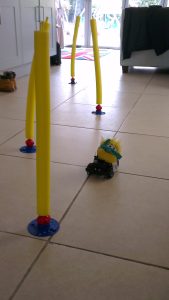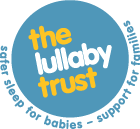Stuck for ideas? Why not try a themed activity week?! Nanny Claire has done weeks of activities centered around Princesses, cars and space, and here she shares her Winter Olympic theme with a twist.
 I’m a nanny and look after 3 children, two girls E 12 years old and AM 6 years old and one boy AC 9 years old. My job is usually part-time, I do the school run and then ferrying around various after school activities and playdates. However, there are times that those who look after children dread…the school holidays.
I’m a nanny and look after 3 children, two girls E 12 years old and AM 6 years old and one boy AC 9 years old. My job is usually part-time, I do the school run and then ferrying around various after school activities and playdates. However, there are times that those who look after children dread…the school holidays.
I had not given much thought as to what we were going to do all week, swimming, movies and playdates were confirmed but they don’t take up the whole week. On Monday the kids were having breakfast and it just so happened that the Winter Olympics were on, so especially with sports obsessed AC, we were watching the curling. I’m usually quite strict on TV hours, switched off after breakfast until at least 4:30pm, but the Winter Olympics is not on every week so it’s an exception to the rule.
As most of us who look after children know, it’s not long before we get the inevitable phrase “What are we going to do today?”, one of the kids said that curling looking fun so I said I bet we can find something to do curling with if you get washed and dressed, at which point they vanished like speedy ninjas.
So now I had to find something to play curling with, I wandered around looking at the various toys and then I saw the puffles…If anyone doesn’t know what a puffle is, they are pets for penguins on the popular Club Penguin game, they are basically small round, come in various colours and have fuzzy hair. There happen to be quite a few in the kids collection, kind of curling stone shaped and should slide across the floor quite nicely!
The weather outside was typically pouring down with rain, so I tested some chalk on the kitchen tiles just to make sure it would come off later (not my floor after all!), no problem there so I sketched out some circles to represent the house in curling, got the brush out of the cupboard and we were ready to go! There was soon puffles flying in all directions and much laughing, arguing and cheering. We decided that scoring would be whoever got their puffles closest to the middle on their turn, I didn’t expect the game to be such a big hit and the kids asked what other events we could do.
 So we looked up the other Olympic sports there were, and I tried to work out how we could replicate them at home, a brief thought of kids sliding down the stairs on trays entered my mind swiftly followed by thoughts of a trip to A & E. However bob sleigh could work, if we made them for the puffles and not the kids. So at dinner I told the kids we were going to be making bob sleds for the puffles tomorrow.
So we looked up the other Olympic sports there were, and I tried to work out how we could replicate them at home, a brief thought of kids sliding down the stairs on trays entered my mind swiftly followed by thoughts of a trip to A & E. However bob sleigh could work, if we made them for the puffles and not the kids. So at dinner I told the kids we were going to be making bob sleds for the puffles tomorrow.
On Tuesday morning I was greeted with much excitement, “Are we still making sleds for puffles today? After breakfast I raided my box collection, always have a variety of empty boxes for such rainy days, I cut down 3 boxes to the same size for each of them, out came the glue, and various arts and crafts paraphernalia. There was much discussion about what would make it slide better, runners on the bottom, aerodynamics, making it look pretty, etc.
I fashioned a slide out of some cardboard box strips and white bin liners, and put it on the stairs, we then timed each puffle and recorded the time. The kids spontaneously decided to create a team name and made-up country for their puffles, so we then had team Fermat for E, team Mouseling for AM and team I Don’t Know for AC, they created maps for their countries and an event chart went up on the wall, all their own ideas I’m proud to say.
 The pressure was now on me to come up with the next day’s event, thinking of the events involved I decided that the Ski slalom was possible with a little help from a remote control car! This did involve tying the puffle to the car under the pretence of a seat belt, and the kids made crash helmets out of craft foam for them! The kids have a building set called Cranium which is a set of poles and cloths which can be constructed to create play houses, etc. and the poles turned out to be quite useful for slalom flags. We opted for the rule of having to go around 2 poles at least and not all of them, this way they all had a good chance to get around the course successfully. They had plenty of time to practice driving the car before we did individual times and recorded them on the event sheet, needless to say puffles and poles went flying in all directions!
The pressure was now on me to come up with the next day’s event, thinking of the events involved I decided that the Ski slalom was possible with a little help from a remote control car! This did involve tying the puffle to the car under the pretence of a seat belt, and the kids made crash helmets out of craft foam for them! The kids have a building set called Cranium which is a set of poles and cloths which can be constructed to create play houses, etc. and the poles turned out to be quite useful for slalom flags. We opted for the rule of having to go around 2 poles at least and not all of them, this way they all had a good chance to get around the course successfully. They had plenty of time to practice driving the car before we did individual times and recorded them on the event sheet, needless to say puffles and poles went flying in all directions!
I went home that night and dreamt of puffles, and how to do the next event! I decided that I could recycle the bob sled run into a ski jump and use the remote control car again; we used a sun lounger cushion so we didn’t mangle the car. I admit the car was very slow but managed to construct the jump so if you lined up well you could get the car to do a small jump off the end, sufficient enough to get a small measurement anyway. The kids all got to practice again before we took some final measurements. This wrapped up the final event of the Pufflympics, the next day was Friday and the last day of the holidays.
We decided to host our own closing ceremony; a toy shopping trolley became a puffle parade float with a few adaptions of course. The kids designed their own part of the float to put their puffle on to reflect their team and country. Next was designing their own podium step, E helped me make some medals by gluing some sequins to stickers and then cutting them out. E made a party playlist on her iPod and wrote a speech, AC lined the parade route on the floor with string and AM helped me get some food ready. It was junk food heaven as I let them have full reign on what food they wanted, so we had hot dogs, pizza, chips, cheese sandwiches and squishy tomatoes (AM really really likes cherry tomatoes roasted until extremely squishy)!
So after a busy week hosting the Pufflympics the kids had been entertained all week when it was generally too rainy to go outside, and I hadn’t been driven mad by kids asking what they can do every 10 minutes. Most importantly we all learned a lot more about the winter Olympic sports, lots of fancy new words and rules and at a fraction of a cost compared to the real thing. I essentially used toys and things we had in the house, the kids had a blast and spontaneously added lots of their own ideas of what they could do. If you fancy hosting your own event you don’t necessarily have to have puffles on hand, cars would also have made great competitors for the Carlympics or a variety of cuddly toys for the Cuddlympics? You don’t need to be confined indoors or to the Olympics either. Why not host the World Cup or the Commonwealth Games outside?

 I’m a nanny and look after 3 children, two girls E 12 years old and AM 6 years old and one boy AC 9 years old. My job is usually part-time, I do the school run and then ferrying around various after school activities and playdates. However, there are times that those who look after children dread…the school holidays.
I’m a nanny and look after 3 children, two girls E 12 years old and AM 6 years old and one boy AC 9 years old. My job is usually part-time, I do the school run and then ferrying around various after school activities and playdates. However, there are times that those who look after children dread…the school holidays. So we looked up the other Olympic sports there were, and I tried to work out how we could replicate them at home, a brief thought of kids sliding down the stairs on trays entered my mind swiftly followed by thoughts of a trip to A & E. However bob sleigh could work, if we made them for the puffles and not the kids. So at dinner I told the kids we were going to be making bob sleds for the puffles tomorrow.
So we looked up the other Olympic sports there were, and I tried to work out how we could replicate them at home, a brief thought of kids sliding down the stairs on trays entered my mind swiftly followed by thoughts of a trip to A & E. However bob sleigh could work, if we made them for the puffles and not the kids. So at dinner I told the kids we were going to be making bob sleds for the puffles tomorrow. The pressure was now on me to come up with the next day’s event, thinking of the events involved I decided that the Ski slalom was possible with a little help from a remote control car! This did involve tying the puffle to the car under the pretence of a seat belt, and the kids made crash helmets out of craft foam for them! The kids have a building set called Cranium which is a set of poles and cloths which can be constructed to create play houses, etc. and the poles turned out to be quite useful for slalom flags. We opted for the rule of having to go around 2 poles at least and not all of them, this way they all had a good chance to get around the course successfully. They had plenty of time to practice driving the car before we did individual times and recorded them on the event sheet, needless to say puffles and poles went flying in all directions!
The pressure was now on me to come up with the next day’s event, thinking of the events involved I decided that the Ski slalom was possible with a little help from a remote control car! This did involve tying the puffle to the car under the pretence of a seat belt, and the kids made crash helmets out of craft foam for them! The kids have a building set called Cranium which is a set of poles and cloths which can be constructed to create play houses, etc. and the poles turned out to be quite useful for slalom flags. We opted for the rule of having to go around 2 poles at least and not all of them, this way they all had a good chance to get around the course successfully. They had plenty of time to practice driving the car before we did individual times and recorded them on the event sheet, needless to say puffles and poles went flying in all directions!


 This is a guest posting from The Lullaby Trust. The Lullaby Trust, formerly FSID, promotes expert advice on safer baby sleep and provides specialist support for bereaved families.
This is a guest posting from The Lullaby Trust. The Lullaby Trust, formerly FSID, promotes expert advice on safer baby sleep and provides specialist support for bereaved families.